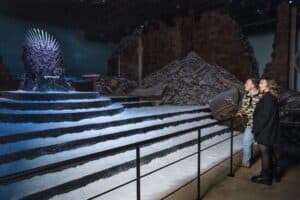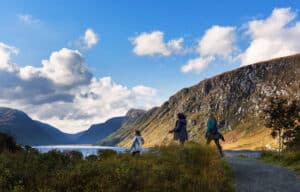The northern lights are a widely talked about natural phenomenon that are as elusive as they are spectacular. Weather, season, and country location are all important factors in seeing the magnificent lights. Iceland is one of the best countries to visit for a chance to see the impressive lights. Mountains, glaciers, and lava fields serve as breathtaking backdrops to enjoy the incredible lights show.
What are the northern lights?

Aurora borealis, or northern lights, are a natural occurrence which appear in the sky in high-latitude areas near the Arctic Circle. The polar lights are caused by collisions between electronically charged particles that travel with the solar wind along with the Earth’s magnetic field and atmosphere. When the solar wind reaches our planet, it crashes into the Earth’s magnetic field. From there, some of the charged particles manage to escape and get through the magnetic field. After entering the Earth’s atmosphere, the Sun’s particles collide with gas atoms which cause the emission of what we see as the northern lights. The auroras are most often a light green color with a hint of white and pink but can vary in other colors including red, blue, or yellow.
When is the best time to see the northern lights?
The best time to see the northern lights in Iceland are from the end of September to the end of March. The skies need to be dark in order to see the colorful lights. This rules out any day time hours. The ideal time of day for viewing is typically between 9:30pm and 1:00am. The middle winter months of December and January offer higher chances of seeing the lights since that is when it would be the darkest.
What are the best viewing conditions?
Clear skies are essential to seeing the northern lights. A couple clouds won’t affect the sight too much but anything more than that will hinder the view of the lights. The skies are clearer if the temperature falls below zero which is most likely to happen during the winter. The winter is also typically less cloudy than autumn so going to see the lights in the middle of winter is a better choice. A full moon could also hinder your chances of seeing the lights since the moon becomes so bright. It’s best to try and avoid hunting for the lights during a full moon.
Where are the best places to view the northern lights?
 Since it has already been established that complete darkness is required for viewing the northern lights, your chance of seeing the lights are greater in the countryside because you will be away from heavy light pollution in the city. A few hours away from Reykjavik is Vik. There is a black sand beach located there which becomes the host of a great place to view the lights. Listen to the waves crash on shore as you watch the sky come alive. Thingvellir is another good place to catch the lights since you will have the natural beauty of the national park as a backdrop. Jokulsarlon glacial lagoon is also a good place to experience the lights. During the winter, not a lot of people visit this otherwise popular attraction therefore allowing you to have this area to yourself.
Since it has already been established that complete darkness is required for viewing the northern lights, your chance of seeing the lights are greater in the countryside because you will be away from heavy light pollution in the city. A few hours away from Reykjavik is Vik. There is a black sand beach located there which becomes the host of a great place to view the lights. Listen to the waves crash on shore as you watch the sky come alive. Thingvellir is another good place to catch the lights since you will have the natural beauty of the national park as a backdrop. Jokulsarlon glacial lagoon is also a good place to experience the lights. During the winter, not a lot of people visit this otherwise popular attraction therefore allowing you to have this area to yourself.





